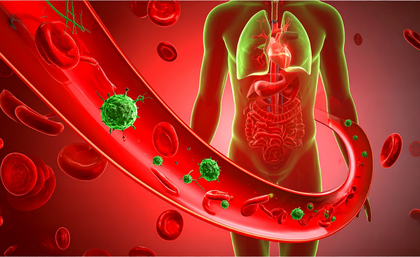Indian scientists develop new nano-sensor to detect deadly sepsis infection in minutes
By IANS | Updated: July 24, 2025 15:14 IST2025-07-24T15:08:15+5:302025-07-24T15:14:44+5:30
New Delhi, July 24 A group of scientists from the National Institute of Technology (NIT) Calicut has developed ...

Indian scientists develop new nano-sensor to detect deadly sepsis infection in minutes
New Delhi, July 24 A group of scientists from the National Institute of Technology (NIT) Calicut has developed a new highly sensitive, low-cost, and point-of-care device with an electrochemical biosensor that could rapidly diagnose deadly sepsis infections and boost treatment outcomes.
Sepsis is a serious medical condition caused by an infection that can lead to multiple organ failure, shock, and even death. Early and accurate diagnosis is crucial for timely therapeutic intervention and improving patient outcomes, which in turn directly impact mortality rates.
Early diagnosis is possible with the precise and sensitive detection of specific biomarkers. Endotoxin, a toxic component of the outer membrane of Gram-negative bacteria, acts as a key biomarker, signalling the presence of an infection that could lead to sepsis.
To rapidly detect endotoxin, the NIT team developed eight distinct sensor architectures. Of these, seven employed electrochemical detection, and one utilised optical detection, said the team led by Dr. N. Sandhyarani, Professor, NIT Calicut.
In the paper, published in the journal Langmuir, the team demonstrated a highly sensitive electrochemical sensor chip designed for the selective detection of Lipopolysaccharide (LPS), which is compatible with a portable analyser for on-site detection.
All the sensors exhibited high selectivity and detected endotoxin in the presence of other interfering compounds.
"The presence of endotoxin is detected in the pharmaceutical drug Biphasic isophane insulin, fruit juices, and whole blood by the standard addition method. The endotoxin recovery was within 2 per cent error in all the cases,” the researchers said.
Further, two of the electrochemical platforms demonstrated versatility by enabling the sensitive detection of Gram-negative bacteria, specifically E. coli, in water samples.
The findings also demonstrated that the quantification of E. coli using these platforms is comparable to traditional biological methods and also reduces analysis time. This highlights their potential for efficient water quality monitoring, the team said.
The team's point-of-care device -- a portable and cost-effective electrochemical biosensor prototype specifically for endotoxin detection -- detected endotoxin in blood serum using a standard addition method, providing results within 10 minutes.
Disclaimer: This post has been auto-published from an agency feed without any modifications to the text and has not been reviewed by an editor
Open in app